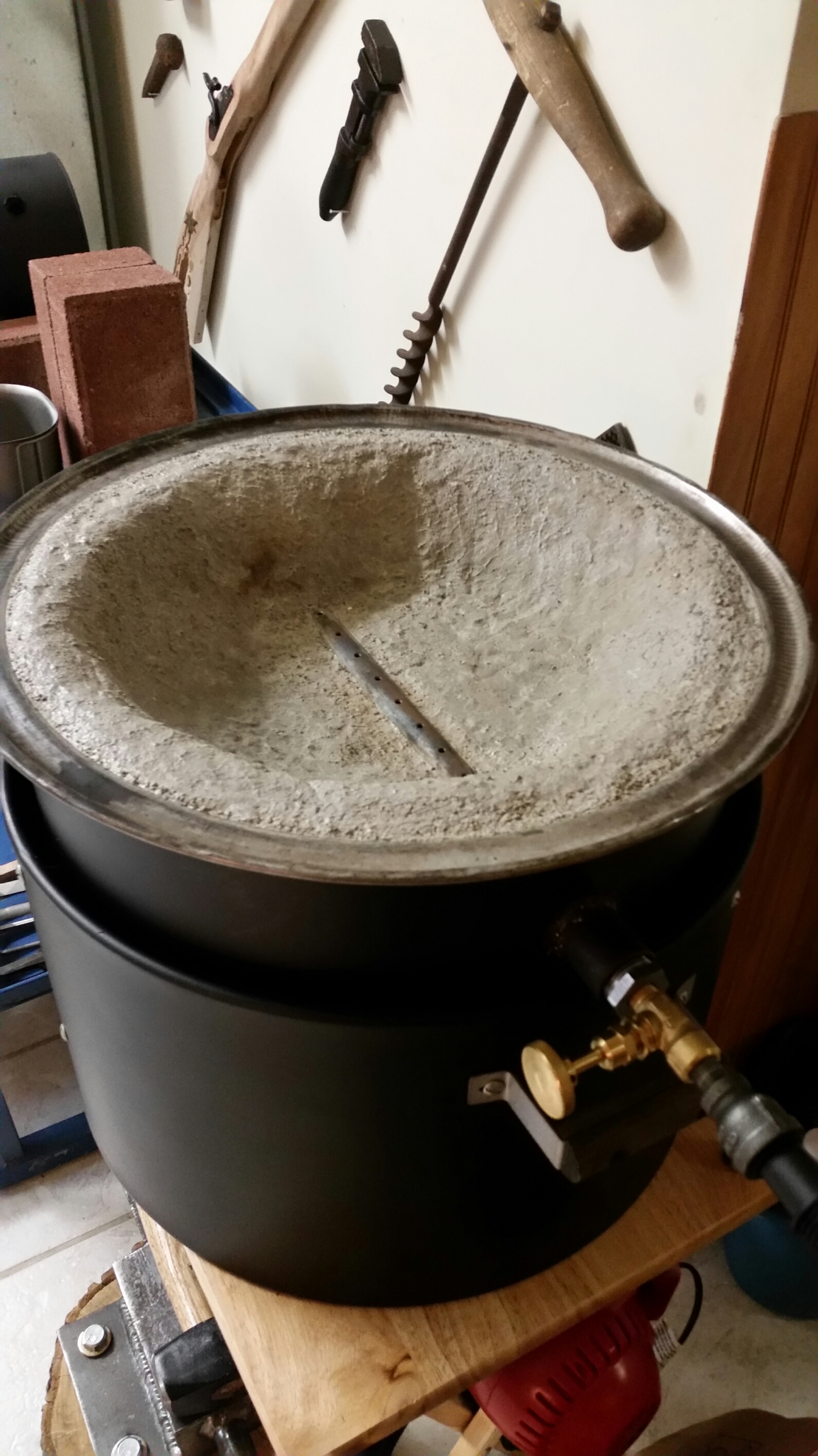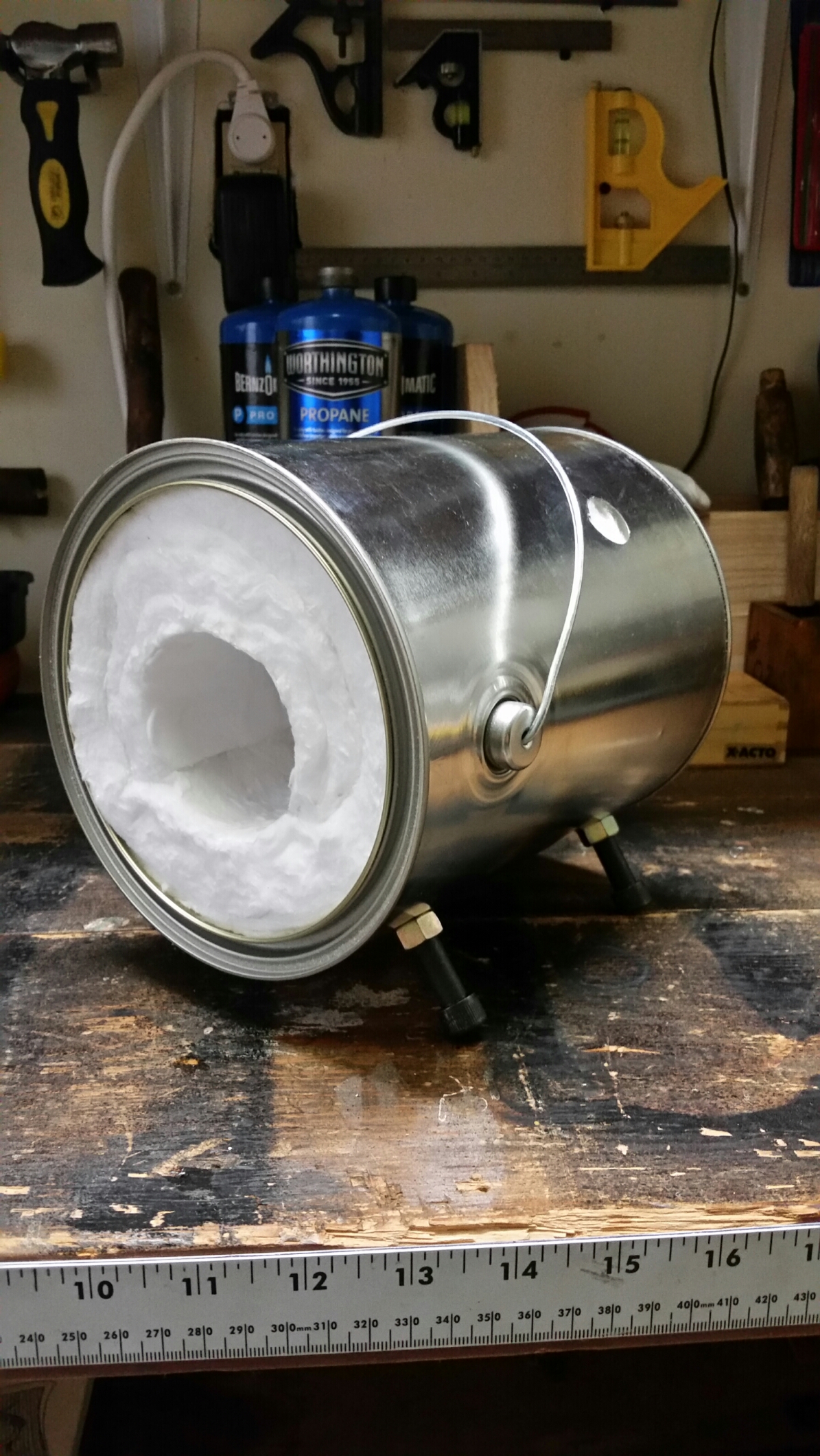I built one years ago using a brakedrum from a truck nestled in a box of sand as the fire-pit; a couple of plumbing nipples, a "T" fitting and my wife's old hair drier and I had a pretty good forge
The brake drum ones are renown to work well.
I made one from Quickcrete concrete using sand as an aggregate instead of the plain version. I made a mold using a small, cardboard box about 10" x 10". First I placed some cardboard on the bottom, so that I had about a 1" depression with a 1" border. Then I fashioned a shallow, carboard cone, more like a funnel shape, and placed this in the center of the carboard on the bottom. Then I used two toilet paper tubes joined with masking tape like this |”“. This was masking taped to the tip of the cone within the box. What this did when the concrete was mixed it, and poured into the mold..., it created a 1" deep inner space with a shallow depression, AND an opening beneath the depression for ash to fall, plus an opening to the side of the ash chamber which allowed air to be blown in from below. I bought a commercial, round tuyere to cover the coned area in the concrete (I made the cone to allow the tuyere to sit inside). When it was hardened, I simply removed all of the cardboard bits, and inverted it on the ground to allow it to finish curing. I fired it up with charcoal and using a hand drier for the air. It cracked slighly, but I had used a couple of handfuls of galvanized finishing nails inserted into the concrete as I did my pour, at odd angles to create a sort of "reinforced concrete". Some folks told me this wasn't the right idea...it's been working for several years now.
It's great for heating up small parts and for fixing frizzens....works with coal or charcoal. I found it was important to use Quickcrete as a slow to set up concrete would crush the cardboard forms within the mold before taking the proper shape because the water in the concrete of course softens the cardboard.
The advantages about the concrete is that I could fashion another with a special firebox if I wanted to get even heating on knife blades, for example. I'd probably apply a layer of refractory cement on the areas that are in contact with the heat in the next one that I make. I simply place it on the ground when using it, no need for an ash gate. It's stable, I'm not going to tip it over, and it was super inexpensive to make, and a short time from pour to use.
The disadvantages are it's heavy so while it's not going to get tipped over, it's not light to move around. The concrete does take heat and hold it so you're not going to wrap up a job at a friend's house, and then chunk it in your trunk and drive home right away. You have to be mindful to keep it from getting rained on between uses so you have to store it in the shed, for if you get some tiny cracks and moisture gets in, then you fire it, the expanding steam might cause you a world of problems.
But..., For the cost of some scrap cardboard, a bag of sand aggregate concrete, and a a store bought tuyere....not too bad.
LD








